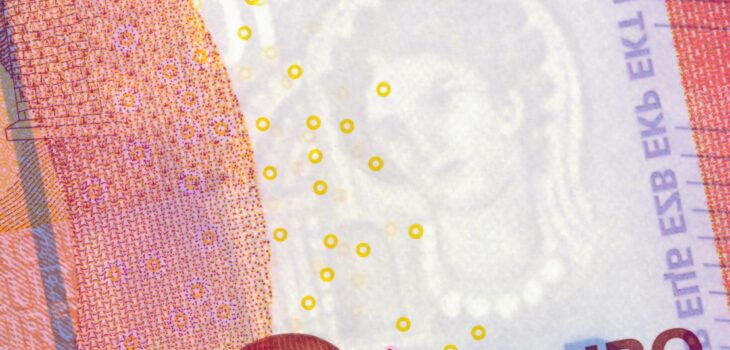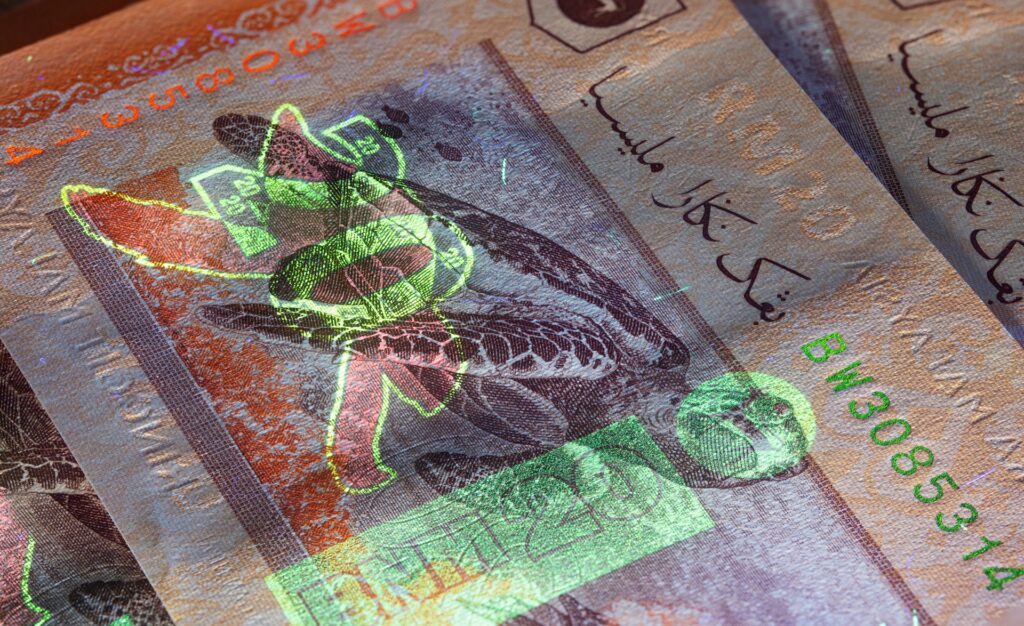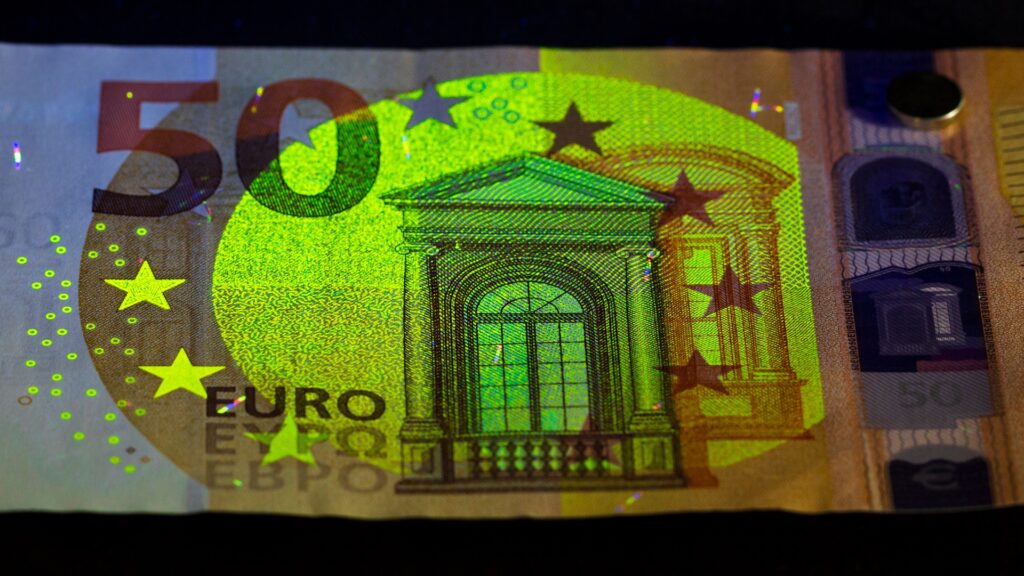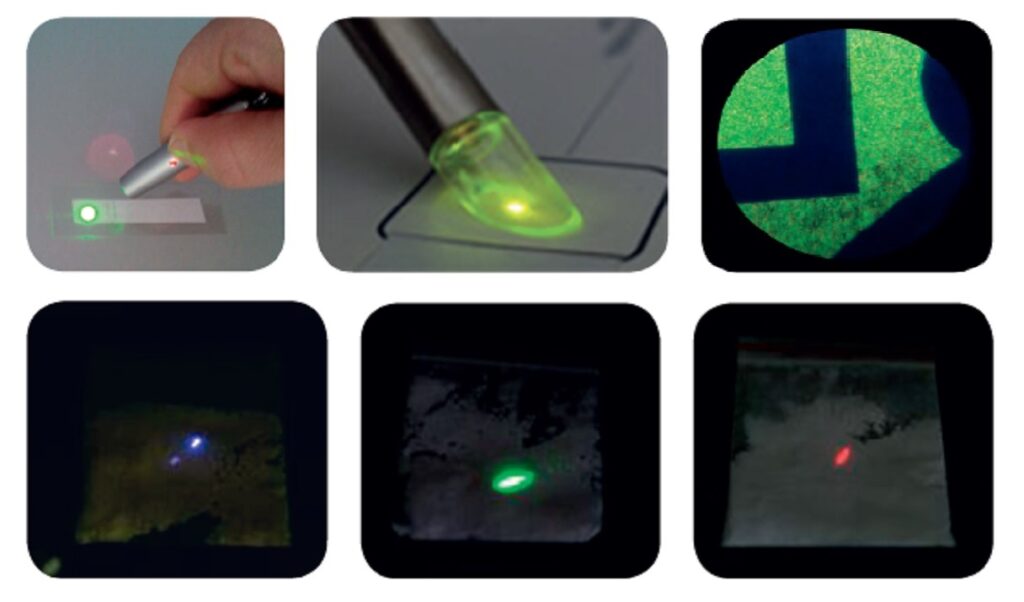Special inks for protection of securities against counterfeit. Part 2


The main characters of the first part of this article („Świat DRUKU, issue 3/2022) have been fluorescent inks excited by UV light, often used for protecting securities such as banknotes or documents. It is time to introduce other inks using the phenomenon of luminescence – inks reacting to infrared and phosphorescent inks.
IR inks are almost completely transparent inks (similarly to inks from the first part of this article) converting NIR (near infrared, with a wavelength of 980 nm) emitted by special devices to visible light in red, green, or blue.
These devices take various forms, from highly specialised and expensive machines used in quality control at printing houses which produce securities, to a relatively cheap and simple IR emitter which resembles a pen (the most commpon methos of IR inks’ detection).
One way or another, obtaining such an emitter causes additional problems to the counterfeiter (besides of special agreements regarding purchases of inks or pigments), even if they possess the knowledge on the availability of this type of solutions.
Another type of inks which use the phenomenon of infrared radiation are IR-transparent and IR-non-transparent inks. They are most often used in printing security codes hidden from human eyesight.
The code is printed with IR-non-transparent ink on a black stripe printed with IR-transparent ink. Both inks are black in average light which makes the code invisible. However, IR-non-transparent ink is recognised by infrared scanners, so these devices are able to „see” hidden prints.
Another „luminescent” ink is a phosphorescent ink, able to glow with its own light, caused by prior light exposure (or irradiation by UV light). This ink somewhat „charges” with daylight and „gives back” this charge by glowing in the dark.
The limitation in printing securities can be a necessity of using thick layer of ink to obtain the glowing effect, but producers are trying to overcome this obstacle by using continuously smaller particle sizes in pigments, apart from better and better materials, which results in their stronger luminescence in the dark.




Phosphorescent inks can therefore be a form of security that is easy to be verified, which an observer is able to easily check by putting the print in a dark room or by turning the light off at night
A more sophisticated method of detection is the use of special machines which expose the presence of a phosphorescent ink on a print – in this case, the amount of the ink applied on a printout does not matter.
Another way to use a phenomenon of luminescence in inks for securing documents against forgery can be the use of electroluminescent ink. It glows under the influence of direct or alternating electric current.
Such an ink (actually, an entire set of inks and varnishes) causes huge problems in printing securities due to the need to use a relatively large ink film thickness and the complexity of application; however, it is possible to imagine a printout protected with an ink which can be detected only by applying a current to the security
Within a wide range of special inks and varnishes used in securities, many solutions can be found. In the following articles, I will introduce the effects and methods of operation of inks changing colours under various physical and chemical factors, magnetic inks, as well as penetrating, optically variable, metallic, perceptible etc., among others.




The original article can be found in periodical Świat DRUKU, issue 4/2022



